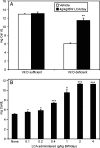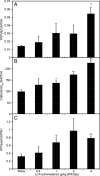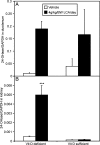Lithocholic acid can carry out in vivo functions of vitamin D
- PMID: 17535892
- PMCID: PMC1891258
- DOI: 10.1073/pnas.0703512104
Lithocholic acid can carry out in vivo functions of vitamin D
Abstract
The physiological ligand for the vitamin D receptor (VDR) is 1,25-dihydroxyvitamin D(3). Lithocholic acid (LCA), a bile acid implicated in the progression of colon cancer, was recently shown to bind to VDR with low affinity and increase expression of the xenobiotic enzymes of the CYP3A family. Thus, LCA can induce its own catabolism through the VDR. We have now found that LCA can substitute for vitamin D in the elevation of serum calcium in vitamin D-deficient rats. Further, LCA in the diet will also replace vitamin D in the mobilization of calcium from bone. Further, LCA induces CYP24-hydroxylase mRNA gene expression in the kidney of vitamin D-deficient rats. It is clear, therefore, that LCA can be absorbed into the circulation to bind to the VDR at extra-intestinal sites. These findings lend support for the idea that the VDR may have evolved from an original role in detoxification.
Conflict of interest statement
The authors declare no conflict of interest.
Figures




References
-
- Jones G, Strugnell SA, DeLuca HF. Physiol Rev. 1998;78:1193–1231. - PubMed
-
- Makishima M, Lu TT, Xie W, Whitfield GK, Domoto H, Evans RM, Haussler MR, Mangelsdorf DJ. Science. 2002;296:1313–1316. - PubMed
-
- Baijal PK, Fitzpatrick DW, Bird RP. Nutr Cancer. 1998;31:81–89. - PubMed
-
- Kutuzova GD, DeLuca HF. Toxicol Appl Pharmacol. 2007;218:37–44. - PubMed
-
- Kishida T, Taguchi F, Feng L, Tatsuguchi A, Sato J, Fujimori S, Tachikawa H, Tamagawa Y, Yoshida Y, Kobayashi M. J Gastroenterol. 1997;32:306–311. - PubMed
Publication types
MeSH terms
Substances
LinkOut - more resources
Full Text Sources
Other Literature Sources
Medical
Research Materials

